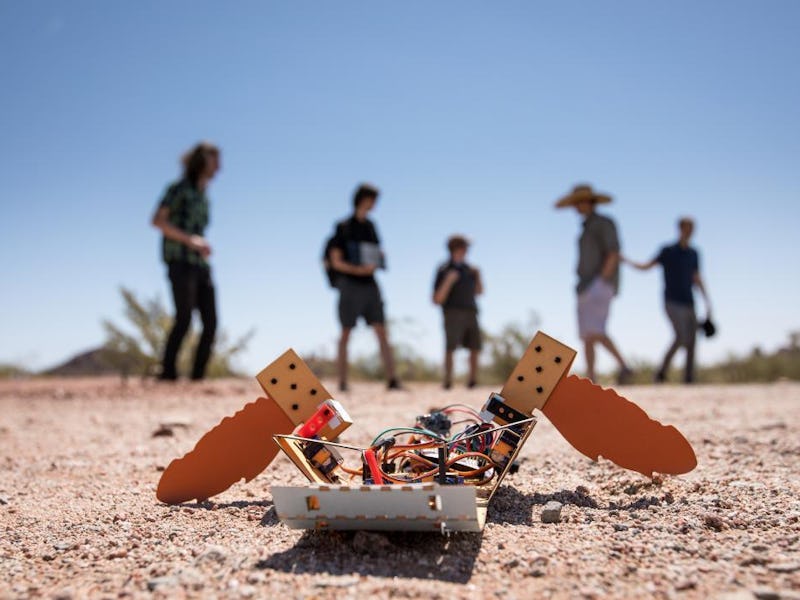When you watch its first attempts to flop across on the sand, you feel worried that it won’t be able to get its body to its final destination. But then it gets a flipper up and digs into the sand just right, and you go from worry to wonder as it starts to slide along. This drama isn’t just for baby sea turtles, but now includes the CTurtle robot that uses machine learning to understand how to walk across the sand.
A team of researchers led by Heni Ben Amor and Daniel Aukes at Arizona State wanted to create a robot that could deal with different types of footing, like shifting sand, and the CTurtle is their answer. The crawler robot costs $70 to build and uses inspiration from how sea turtles move to deal with crossing the sand. Similar to baby sea turtles, the CTurtle has to learn how to travel, using machine learning programs to adapt to its surroundings.
“If we use tricks from nature, it learns much faster,” Ben Amor says in the press statement. “You can use that initial inspiration from nature to get things going.”
Despite its adorable nature, the CTurtle has the potential to perform the serious work of finding landmines as it slides through deserts.
When sea turtles are fully grown they can weigh 350 pounds and still maneuver across the sand to lay eggs without a lot of trouble. Although the CTurtle is much smaller and made mostly of thin cardboard, it follows the same principles. The curve at the front edge of its body prevents it from digging into the sand, similar to the shell of a sea turtle, and its flippers are based on the Loggerhead sea turtle, as the team found that other paddle shapes tended to dig holes or not move the robot.
In its first test, it took the CTurtle an hour to learn how to walk across the desert using machine learning software. The learning algorithm makes the robot better able to deal with changes in its environment than pre-programmed movement types. This lets the robot react if its environment changes. Between the learning ability of the CTurtle and the low cost to produce it, the robot is well suited to search through desert minefields — so someday in the future IUDs might be discovered by a swarm of little turtle robots working together to clear the sand.
